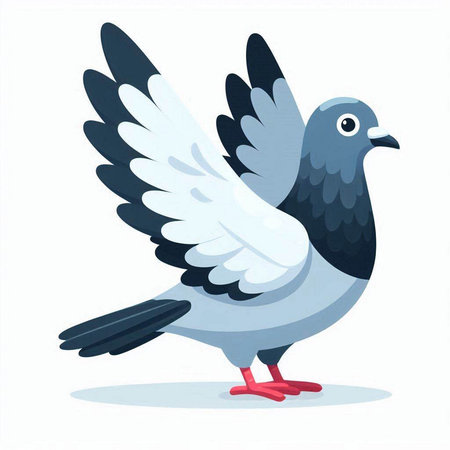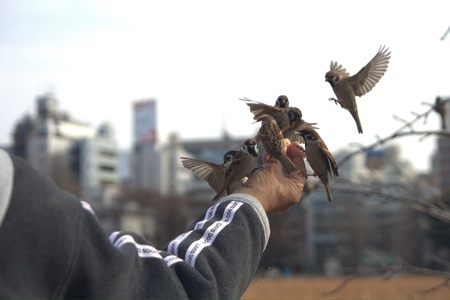Understanding Your Bird’s Personality
Before you start introducing your bird to new people or animals, it’s crucial to take some time to understand its unique personality. Birds, just like people, have their own temperaments—some are outgoing and curious, while others might be shy or easily startled. Begin by observing how your bird reacts to everyday changes in its environment. Does your bird seem excited when guests arrive, or does it retreat to a quiet corner? Take note of how it handles new toys, sounds, or even changes in your daily routine. These clues will help you gauge your bird’s readiness for socialization and new experiences. Recognizing your birds comfort level with change is key to making the introduction process as smooth as possible. By respecting your bird’s boundaries and moving at a pace that suits its temperament, you set the stage for positive interactions with both people and other pets down the line.
2. Preparing Your Bird for New Encounters
Before you start introducing your bird to new people or animals, it’s crucial to set the stage for a positive experience. Birds are naturally sensitive to changes in their environment and can be easily stressed by unfamiliar faces or other pets. By taking a gradual approach and using effective techniques, you’ll help your feathered friend feel secure and confident.
Create a Safe Space
Your bird needs a safe retreat where it can relax during introductions. Designate a specific area—such as its cage or a familiar play stand—as the primary safe space. Make sure this spot is stocked with favorite toys, treats, and perches. Let your bird observe new people or animals from this comfort zone before any direct interaction occurs.
| Preparation Step | Purpose |
|---|---|
| Designate a Safe Space | Provides security and minimizes stress for your bird |
| Stock with Familiar Items | Helps your bird feel comfortable in its environment |
| Observe from a Distance | Allows gradual acclimation to new sights and sounds |
Use Positive Reinforcement
Reward-based training is one of the most effective ways to encourage desired behavior during socialization. When your bird remains calm around new people or animals, offer praise, gentle words, or favorite treats. This helps your bird associate new experiences with positive outcomes, making future introductions easier.
Positive Reinforcement Tips:
- Keep treats handy for immediate rewards.
- Use calm, encouraging tones to reassure your bird.
- Avoid punishing fearful behavior—instead, redirect attention with toys or activities.
- Be patient; progress may be slow at first but will build confidence over time.
Gradual Acclimation Is Key
The process of socializing your bird should be slow and steady. Begin with short sessions where your bird simply sees or hears the new person or animal from afar. Gradually decrease the distance as your bird becomes more comfortable, always observing its body language for signs of stress. Remember, every bird has its own pace—respecting that pace is vital for successful socialization.

3. Introducing Your Bird to New People
Introducing your bird to new people is a crucial part of socialization, ensuring your feathered friend remains confident and stress-free in diverse situations. Follow these step-by-step tips to make each introduction a positive experience for both your bird and your guests.
Step 1: Prepare Your Bird
Before anyone arrives, make sure your bird is in a calm and familiar environment. If possible, schedule introductions during a time when your bird is usually relaxed—avoid nap or feeding times. Offer some of their favorite treats as a reward for calm behavior, and talk soothingly to reassure them.
Step 2: Set Expectations with Guests
Let your friends or family know what to expect before they meet your bird. Remind them that birds can be sensitive to loud noises and sudden movements. Ask guests to speak softly and move slowly around the bird, keeping hands at their sides unless invited to interact.
Step 3: Make the Introduction Gradual
Start by having your guest sit quietly near your bird’s cage or play stand. Allow your bird to observe from a safe distance without forcing interaction. Watch for signs of curiosity, such as approaching the cage bars or vocalizing gently. If your bird seems comfortable, encourage your guest to greet them with a soft “hello” or by speaking the bird’s name in a gentle tone.
Step 4: Encourage Positive Interactions
If your bird remains calm, offer a treat through the bars or on an open palm, but only if your bird is comfortable taking food from strangers. Always supervise closely—never rush physical contact. If your bird appears nervous or retreats, respect their boundaries and try again another day.
Recommended Greetings and Behaviors
Use consistent greetings each time someone meets your bird, such as “Hi there!” or “Good morning!” Birds thrive on routine and may learn to associate specific phrases with positive interactions. Encourage guests not to stare directly into the bird’s eyes, which can feel threatening, and remind everyone that patience is key—some birds warm up quickly, while others need several visits to feel secure.
By following these steps, you’ll set the stage for safe and enjoyable introductions that help your bird become more comfortable around new people over time.
4. Introducing Your Bird to Other Pets
Bringing a new bird into a home with other pets, such as dogs, cats, or even other birds, requires careful planning and supervision. Birds can be sensitive to changes in their environment, and other animals might view your feathered friend as either a playmate or prey. Here’s how to make these introductions safe and stress-free for everyone involved.
Supervision Is Key
Never leave your bird unsupervised with any other household pet, especially during the initial meetings. Even the calmest dog or cat may act unpredictably when faced with a new, unfamiliar animal. Always use a secure carrier or keep your bird safely in its cage during first interactions. Gradually allow the animals to observe each other from a distance before moving closer together.
Understanding Animal Body Language
It’s essential to pay attention to the body language of all animals involved. Here’s a quick guide to help you recognize common signs:
| Animal | Signs of Curiosity/Calm | Signs of Stress/Aggression |
|---|---|---|
| Dog | Relaxed posture, wagging tail (soft), sniffing gently | Stiff body, raised hackles, intense staring, growling |
| Cat | Sitting or lying down calmly, slow blinking | Puffed-up fur, twitching tail, hissing, stalking movements |
| Bird | Calm chirping, smooth feathers, curious head tilts | Pinned eyes, fluffed feathers, vocalizing loudly, lunging at cage bars |
Step-by-Step Introduction Process
- Start by allowing your pets to see and smell each other through a barrier like a cage or closed door.
- If all animals remain calm, gradually reduce the distance while maintaining full control over the situation—dogs should be leashed, cats restrained if necessary.
- Keep sessions short and positive; end on a good note before anyone gets stressed.
Special Considerations for Other Birds
If introducing your bird to another bird, quarantine the newcomer for at least 30 days to prevent disease transmission. Afterward, introduce them in neutral territory and monitor their interactions closely for any signs of aggression or dominance behaviors.
The key to successful introductions is patience and vigilance. By understanding body language and never rushing the process, you’ll foster a harmonious relationship between your bird and your other beloved pets.
5. Handling Setbacks and Stress
Recognizing Signs of Anxiety or Aggression
Introducing your bird to new people or animals can be stressful for them, even if you’re following all the right steps. It’s crucial to watch for signs that your feathered friend is feeling anxious or becoming aggressive. Common stress signals include fluffing up feathers, rapid breathing, biting at the cage bars, excessive squawking, or even trying to hide. Aggression might look like lunging, hissing, snapping their beak, or pinning their eyes. Recognizing these cues early helps you intervene before things escalate.
Troubleshooting Common Issues
If your bird shows signs of distress during introductions, it’s important not to push them further. Instead, take a step back and evaluate what triggered the reaction. Sometimes it’s the presence of too many people at once, unfamiliar smells from other pets, or sudden movements. Reduce stimuli by limiting interactions to one new person or animal at a time and keeping introductions short and positive.
Adjusting the Introduction Pace
Every bird has their own comfort level and pace when it comes to meeting new friends. If setbacks occur, slow down the process—go back to a previous step where your bird felt safe and confident. Use positive reinforcement like treats or gentle praise to encourage calm behavior during each exposure.
Seeking Professional Help
If you notice persistent aggression or anxiety despite your best efforts, don’t hesitate to consult with an avian vet or a certified animal behaviorist. They can provide tailored strategies specific to your bird’s personality and needs, ensuring everyone stays safe and comfortable.
Patience is Key
Remember, setbacks are normal when socializing birds—especially in a busy American household with guests, kids, and other pets. The key is patience and consistency. By staying attuned to your bird’s signals and responding thoughtfully, you’ll help build their confidence and set them up for successful social interactions in the future.
6. Ongoing Socialization Tips
Socializing your bird isn’t a one-time event—it’s an ongoing process that helps keep your feathered friend happy, confident, and well-adjusted. To maintain your bird’s social skills, it’s important to continue exposing them to new experiences and people on a regular basis. Take your bird out of their cage daily for supervised interaction, and invite trusted friends or family members to participate in play sessions. Consider introducing your bird to new environments within your home, like different rooms or safe outdoor spaces in a secure travel cage. Community interactions can also make a difference—some local pet stores, bird clubs, or even parks host bird meet-ups where you and your bird can mingle with fellow avian enthusiasts.
Enrichment Activities for Social Growth
Keeping your bird mentally stimulated is key to preventing boredom and maintaining positive behaviors. Rotate toys frequently to spark curiosity, and offer puzzle feeders that encourage problem-solving. Schedule regular training sessions using positive reinforcement—this not only strengthens your bond but also boosts your bird’s confidence around people and other pets. Don’t hesitate to introduce safe, novel items like branches, bells, or mirrors under supervision to keep things interesting.
New Experiences Matter
Expose your bird to everyday household sounds such as the vacuum cleaner, TV, or doorbell at a comfortable distance so they become accustomed to common noises. For birds that are comfortable traveling, short car rides or trips in a secure carrier can help expand their world safely.
Building a Supportive Routine
Consistency is crucial—establish a daily routine that includes time for socialization, enrichment activities, and quiet bonding moments. Always watch for signs of stress or overstimulation and adjust your approach as needed. With patience and creativity, ongoing socialization will help your bird thrive as a cherished member of your family and community.

